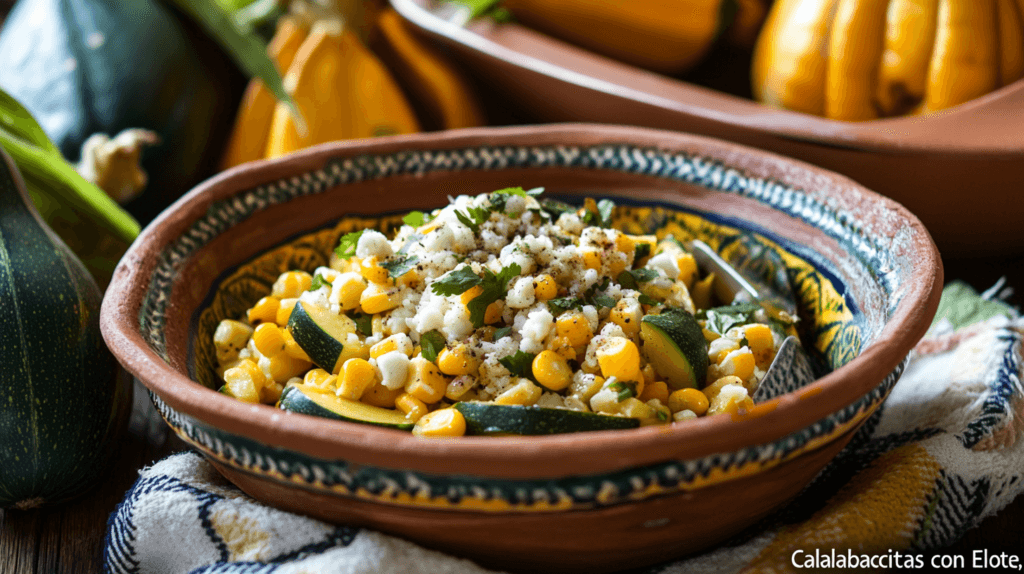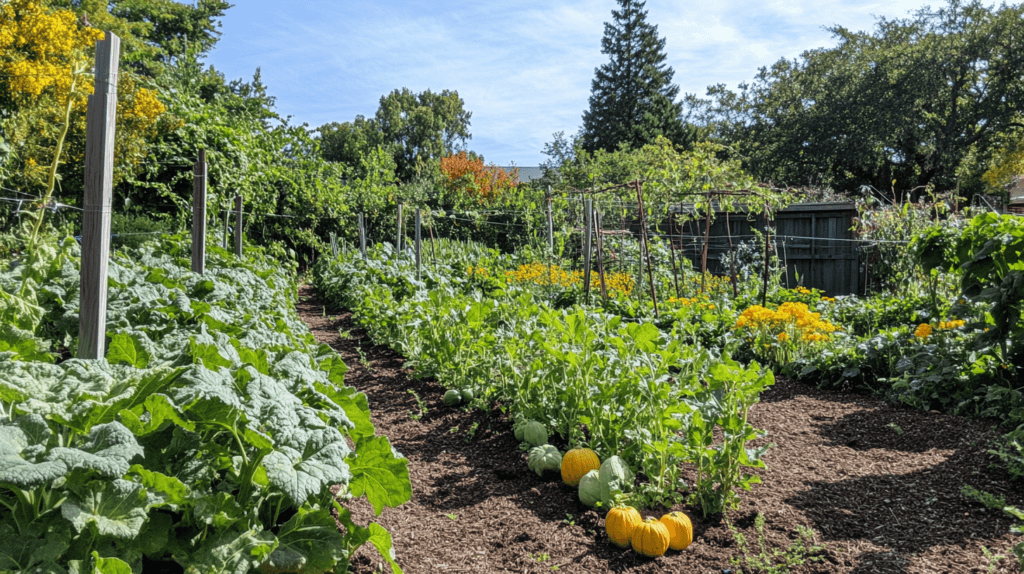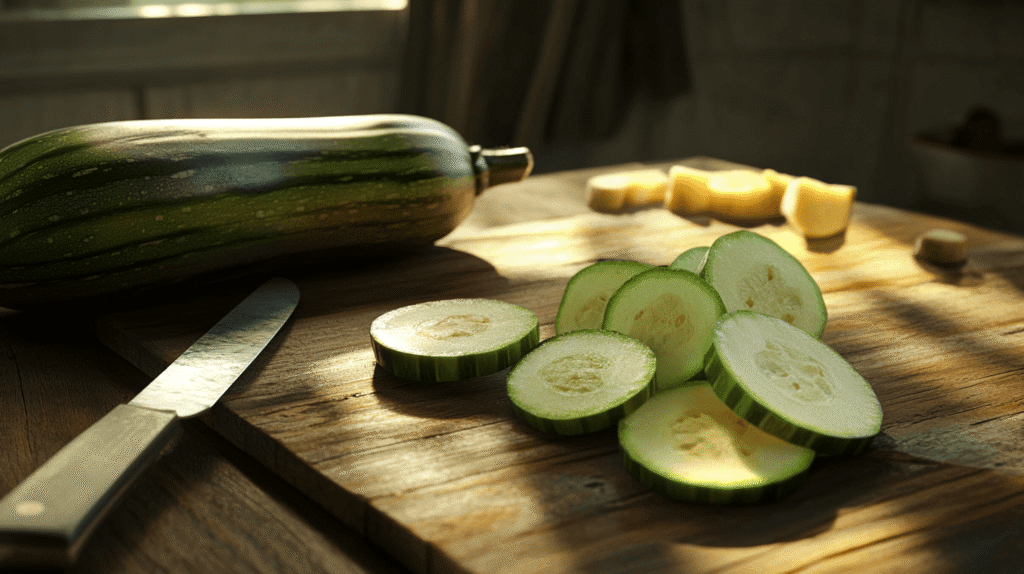What is Calabacita squash? It’s a versatile and nutritious summer squash that is cherished in Mexican and Latin American cuisine. Known for its mild, nutty flavor and tender texture, Calabacita squash, also called “tatume” or Mexican squash, is a staple ingredient in many traditional dishes. Although it’s often compared to zucchini, this unique variety has its own charm, offering distinct characteristics in both flavor and appearance. Whether you’re curious about its origins, nutritional benefits, or culinary uses, Calabacita squash deserves a place in your kitchen and on your plate.
In this article, we’ll explore everything there is to know about Calabacita squash—from its origins and characteristics to its health benefits and culinary uses. Whether you’re a curious home cook, a health enthusiast, or someone simply looking to expand their palate, understanding this incredible vegetable will open the door to exciting possibilities in your kitchen.
Table of Contents
The Origins of Calabacita Squash
Calabacita squash, also known as Mexican squash or tatume squash, has a long and fascinating history that connects it deeply to Mesoamerican agriculture and culture. Its roots date back thousands of years, to a time when indigenous peoples of modern-day Mexico and Central America cultivated it as part of the “Three Sisters” farming method. This ancient practice involved growing squash, corn, and beans together—each crop supporting the growth and health of the others. Calabacita squash was prized not only for its delicious fruit but also for its seeds, which were a valuable source of protein and fats.
The term “Calabacita” is derived from the Spanish word calabaza, meaning squash or pumpkin, and reflects the Spanish influence on the region after their arrival in the Americas in the 16th century. As explorers and traders encountered this crop, it spread to other parts of the world, gaining recognition for its adaptability and culinary potential.
Today, Calabacita remains a staple in Mexican and Latin American cuisines, often featured in traditional dishes that highlight its mild, nutty flavor. Its historical significance extends beyond food—it represents resilience and innovation in agricultural practices and continues to be a symbol of cultural heritage in the region.
What Does Calabacita Squash Look Like?
Calabacita squash has a distinctive appearance that sets it apart from other types of squash. While its shape can vary depending on the specific variety, it is most commonly round, oval, or slightly flattened. The skin is smooth and vibrant green, often adorned with lighter stripes or speckles that give it a striking visual appeal.
Size and Texture
- Size: Calabacita squash is smaller than many other squash varieties, typically measuring 4–6 inches in diameter when harvested at its peak ripeness. Its compact size makes it ideal for grilling, stuffing, or slicing into medallions.
- Texture: The skin is tender and edible when the squash is young, but it can become tougher as the fruit matures. Inside, the flesh is pale green or creamy white, firm yet tender, with a slightly spongy texture that holds up well to cooking.
Comparing Calabacita to Other Squash Varieties
While often compared to zucchini due to their similar flavor profiles, Calabacita is rounder and has a firmer texture, making it better suited for certain dishes like soups or stews. Its physical characteristics and versatility in cooking make it a favorite among chefs and home cooks alike.
Nutritional Profile of Calabacita Squash
Calabacita squash isn’t just delicious—it’s also packed with nutrients that make it a valuable addition to any diet. This low-calorie vegetable offers an impressive range of vitamins, minerals, and other health-promoting compounds.
Vitamins and Minerals
- Vitamin C: A single serving of Calabacita squash provides a significant dose of vitamin C, which supports immune health, collagen production, and antioxidant defense.
- Vitamin A: Essential for eye health and immune system function, vitamin A is abundant in this squash.
- Potassium: Helps regulate blood pressure, support muscle contractions, and maintain proper fluid balance in the body.
- Folate: Crucial for cell growth and DNA synthesis, especially important during pregnancy.
Dietary Fiber
One of the standout features of Calabacita squash is its high fiber content. Dietary fiber supports digestive health by promoting regular bowel movements, feeding beneficial gut bacteria, and helping to prevent constipation. Fiber also contributes to a feeling of fullness, making Calabacita a great option for those aiming to manage their weight.
Low-Calorie and Hydrating
With a water content of nearly 95%, Calabacita squash is hydrating and low in calories, making it ideal for weight loss or maintaining a balanced diet. A one-cup serving of cooked Calabacita contains approximately:
- Calories: 20–25
- Carbohydrates: 4–6 grams
- Protein: 1–2 grams
- Fat: Less than 1 gram
Antioxidants and Phytonutrients
Calabacita squash contains antioxidants such as lutein and zeaxanthin, which help protect the eyes from damage caused by blue light and oxidative stress. These compounds also contribute to overall cellular health by neutralizing free radicals.
Ideal for Specialized Diets
Because it is gluten-free, low in carbohydrates, and plant-based, Calabacita squash is an excellent choice for a variety of dietary preferences and needs, including:
- Keto or Low-Carb Diets: Its minimal carbohydrate content makes it suitable for those managing their carb intake.
- Vegan and Vegetarian Diets: It’s a versatile vegetable that can serve as a plant-based substitute in many recipes.
- Weight Management Plans: Low in calories but rich in nutrients and fiber, it’s a satisfying addition to meals.
Incorporating Calabacita squash into your diet not only adds variety to your meals but also delivers a range of health benefits that support overall wellness. Whether grilled, roasted, or sautéed, this nutrient-packed squash deserves a place on your plate.
Types of Calabacita Squash
Varieties of Calabacita Squash
Calabacita squash comes in several varieties, each with subtle differences in appearance and taste. The most common types include:
- Tatume Squash: A round, green variety known for its firm texture and nutty flavor. It’s especially popular in Mexican cooking.
- Round Zucchini: While technically not the same, this type is often used interchangeably with Calabacita due to its similar shape and mild taste.
- Golden Calabacita: A rarer yellow version with a slightly sweeter flavor and softer texture.
These varieties make it easy to find a Calabacita squash that fits your specific culinary needs.
Differences Between Calabacita and Zucchini
Though often compared to zucchini, Calabacita squash has distinct characteristics:
- Shape and Size: Calabacita is usually round or oval, while zucchini is long and cylindrical.
- Flavor: Calabacita offers a nuttier, richer taste compared to zucchini’s mild profile.
- Texture: The flesh of Calabacita is firmer, making it ideal for grilling, stuffing, or roasting.
While they can be used interchangeably in recipes, understanding these differences allows for more precise culinary results.
Culinary Uses

How Is Calabacita Squash Used in Cooking?
Calabacita squash is a culinary gem due to its versatility. It can be steamed, roasted, grilled, sautéed, or even eaten raw in salads. Its mild flavor allows it to absorb the spices and flavors of any dish, making it a popular choice for soups, stews, and casseroles.
Some common ways to cook Calabacita squash include:
- Stuffing: Hollow out the squash and fill it with meats, grains, or vegetables.
- Sautéing: A quick sauté with garlic and olive oil brings out its natural sweetness.
- Grilling: Lightly charred Calabacita makes a delicious side dish or salad topping.
Traditional Mexican Recipes Featuring Calabacita
Calabacita squash holds a special place in Mexican cuisine. Some traditional dishes include:
- Calabacitas con Elote: A sautéed mix of Calabacita, corn, tomatoes, and cheese.
- Squash Blossom Quesadillas: Featuring the edible flowers of the Calabacita plant.
- Sopa de Calabacita: A comforting soup with squash, chicken, and herbs.
Versatile Modern Recipes with Calabacita Squash
For a contemporary twist, consider using Calabacita in:
- Vegetable Stir-Fries: Add sliced Calabacita for a crunchy, nutrient-rich component.
- Zoodles: Create low-carb noodles by spiralizing Calabacita squash.
- Roasted Veggie Bowls: Combine roasted Calabacita with quinoa, chickpeas, and tahini dressing.
Health Benefits
Why Is Calabacita Squash Good for You?
Calabacita squash offers numerous health benefits:
- Low in Calories: Ideal for weight-conscious individuals.
- Rich in Antioxidants: Helps combat free radicals and reduce inflammation.
- Hydrating Properties: High water content supports hydration and skin health.
Calabacita Squash for Weight Loss
The low-calorie and high-fiber content of Calabacita squash make it a perfect addition to weight-loss diets. It keeps you feeling full without adding unnecessary calories, making it a satisfying choice for healthy meals.
Calabacita’s Role in Promoting Digestive Health
Fiber plays a significant role in maintaining gut health, and Calabacita squash is an excellent source. Regular consumption can help regulate bowel movements, prevent constipation, and promote a healthy microbiome.
Growing Calabacita Squash

How to Grow Calabacita Squash at Home
Growing Calabacita squash is a rewarding process, as it thrives in a variety of climates and is relatively easy to cultivate. Here’s a step-by-step guide to help you grow this versatile vegetable in your garden:
- Choose the Right Location: Calabacita squash requires full sun and well-draining soil. Ensure the spot receives at least 6–8 hours of sunlight daily.
- Prepare the Soil: Enrich the soil with compost or organic matter to promote healthy growth. A slightly acidic to neutral pH (6.0–7.5) is ideal.
- Planting: Sow seeds directly into the soil once the danger of frost has passed. Plant them about 1 inch deep and 2–3 feet apart to allow for proper air circulation.
- Watering: Keep the soil consistently moist but not waterlogged. A drip irrigation system can help maintain even moisture levels.
- Fertilizing: Use a balanced fertilizer every 2–3 weeks to support growth and fruit production.
- Harvesting: Calabacita squash is ready to harvest when it reaches 4–6 inches in diameter. Pick it early to enjoy its tender texture and rich flavor.
Common Pests and Diseases of Calabacita Squash
Like all plants, Calabacita squash is susceptible to pests and diseases. Here’s how to manage common issues:
- Pests:
- Squash Bugs: Remove manually or use neem oil as a natural deterrent.
- Aphids: Spray with soapy water or introduce beneficial insects like ladybugs.
- Diseases:
- Powdery Mildew: Prevent by ensuring good air circulation and avoiding overhead watering.
- Blossom-End Rot: Maintain consistent watering and ensure calcium-rich soil.
By following these steps, you can enjoy a bountiful harvest of fresh, homegrown Calabacita squash.
Buying and Storage
Tips for Selecting Fresh Calabacita Squash
When purchasing Calabacita squash, look for the following qualities to ensure freshness:
- Firmness: The squash should feel firm and heavy for its size.
- Skin Quality: Opt for specimens with smooth, unblemished skin free from cuts or soft spots.
- Color: Vibrant green or yellow tones are signs of freshness.
Avoid squash that feels mushy or has visible mold, as these are indicators of spoilage.
How to Store Calabacita Squash
Proper storage extends the shelf life of Calabacita squash:
- Refrigeration: Place the squash in a perforated plastic bag and store it in the crisper drawer for up to a week.
- Freezing: For long-term storage, blanch and freeze sliced Calabacita squash. It can last up to 8–12 months in the freezer.
- Room Temperature: If the squash is freshly harvested and unwashed, it can be stored in a cool, dry place for 1–2 days.
By storing Calabacita correctly, you can enjoy its flavor and nutrients even after harvest.
Frequently Asked Questions About Calabacita Squash
What Does Calabacita Squash Taste Like?
Calabacita squash has a mild, slightly nutty flavor with a hint of sweetness. Its tender texture makes it ideal for absorbing spices and flavors in recipes. For inspiration on how to pair it with other dishes, check out what to serve with Calabacitas – best pairings.
Can I Eat the Skin of Calabacita Squash?
Yes! The skin of young Calabacita squash is edible and adds a pleasant texture. However, larger, mature squash may have tougher skin that’s best removed.
How Is Calabacita Squash Different from Zucchini?
While similar in flavor, Calabacita is rounder and often smaller than zucchini. It also has a slightly firmer texture and a nuttier taste. Learn more about its unique properties in our Calabacitas recipe – a healthy Mexican dish.
Is Calabacita Squash Healthy?
Absolutely! It’s low in calories, rich in vitamins, and packed with fiber, making it a great addition to a balanced diet.
How Long Does Calabacita Squash Take to Grow?
Calabacita squash typically takes 50–70 days from planting to harvest, depending on growing conditions.
Can I Use Calabacita Squash in Dessert Recipes?
Yes, it’s a versatile ingredient that can be used in sweet dishes like squash bread or muffins, similar to zucchini.
Conclusion
Calabacita squash is a hidden gem in the world of vegetables, offering exceptional flavor, nutritional value, and culinary versatility. Whether you’re growing it in your garden, incorporating it into traditional Mexican dishes, or experimenting with modern recipes, this squash is sure to impress. Its ease of preparation and health benefits make it a fantastic choice for anyone looking to diversify their diet. Why not start with a wholesome Calabacitas con Queso recipe? Your taste buds—and your body—will thank you!

